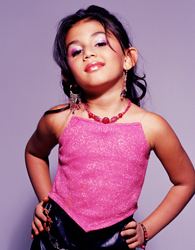I didn’t sleep well last night. As a result of seeing the cockroach I had constant, vivid nightmares; I woke up throughout the night terrified that bugs were crawling all over me. After a restless night’s sleep I wake up to Rose turning on the lights, talking in the room, being in and out and leaving the door open so I can hear the music from the kitchen loud and clear. I am beginning to put her on the same level as the rooster.
It’s an easy day at school today, as me and the girls have decided to leave early, around 1 p.m. to take a short trip into the city. We are plus 1 today as we received a new volunteer from Ireland last night. So it goes like this, I finish taking my shower and come into the living room to find our new volunteer looking roughly 20-years-old sitting on the couch that no one ever sits on. I say hello, take my seat and pull out my book. Its Jane Eyre I’m reading this week, but I can’t focus because he is asking me 20 questions; none of which I can fully remember because his accent had me stunned. Having never heard an Irish accent before I am floored, and that doesn’t happen often. But after my childhood obsession with Harry Potter, this is really no surprise.
Our trip into the city is fairly quiet with the exception that we can’t stop talking. Everyone wants to know about the new kid. In order take the bus into the city it costs 50 shillings which is equivalent to 50 cents; everything is so much cheaper here for us. I saw laptops today selling for 18,000 shillings which is 180 USD.
After an hour ride, we are finally in the city. We do a lot of walking around and are supposed to go to the masai market, but after finding out it’s only open on the weekends, we settle for walking around and looking at the shops.
The city is much cleaner than in Kibera where we live. The sidewalks are not ideal with potholes scattered throughout and the pavement risen in places and after my third time tripping Ian smirks at me and tells me I’m about as graceful as a Giselle.
We walk along the streets and look through the windows on the right while on our left people are lining the sidewalks selling all things from jewelry to books to fruit. People shout at us to buy their products and at one point my hand is grabbed by several men and I have to pull away to get them to let go; shortly after that Lydia, Virginia and myself are whistled at. I guess they are trying to make us feel right at home.
It’s lunchtime in the city and I am relieved to have so many options that don’t consist of rice, ugali or cabbage.
After lunch Lydia and Virginia declare they need to go to the store, so we walk in a massive grocery store that is four levels tall. There are no escalators, only ramps to get from one floor to the next.
Back outside there are bookstands laid out every half block, it is a bookworms dream. And for those of you who know me, yes, your suspicions are correct, I bought a book. I couldn’t help it. Yes, I know I have an illness; because who goes to Africa and buys a book? Oh yea, I do.
The way home is quite eventful as I get to know the new volunteer. I am getting to learn a little about Ireland and he asks plenty of questions about America, (Its surprising how similar our countries are) and we start to swap embarrassing stories. It soon becomes a competition of who can level the playing field with the more embarrassing story. At one point I mention my record player and Polaroid camera and he starts laughing and tells me I am a hipster. I begin to argue that I am definitely not, but I think I am losing this argument. I tell him, “I just appreciate older things and don’t conform to mainstream technology and everything.” He starts laughing and says “you literally just explained what a hipster is!” Apparently all that combined with my love of travel, used bookstores and writing a blog make me a hipster.
Two hours later we finally stop in Kibera and get off the bus. Realizing my shoe is untied I step off to the side to tie it. People skirt around me and without paying much attention to where I am walking, I stand up and take one step forward before slipping and landing right in the deep puddle I was trying to avoid. Dirt, water, and I’m sure some diseases shoot up my leg covering me in this smelly substance. Ian shakes his head and starts laughing “Like I said, graceful as a Giselle” he says. What a fabulous end to the day.



 The consequence is that young girls are equated with grown women. They pose in the same sexualized way a grown woman would leaving no room to distinguish between the innocence of childhood and the perceived sexuality of adulthood.
The consequence is that young girls are equated with grown women. They pose in the same sexualized way a grown woman would leaving no room to distinguish between the innocence of childhood and the perceived sexuality of adulthood.